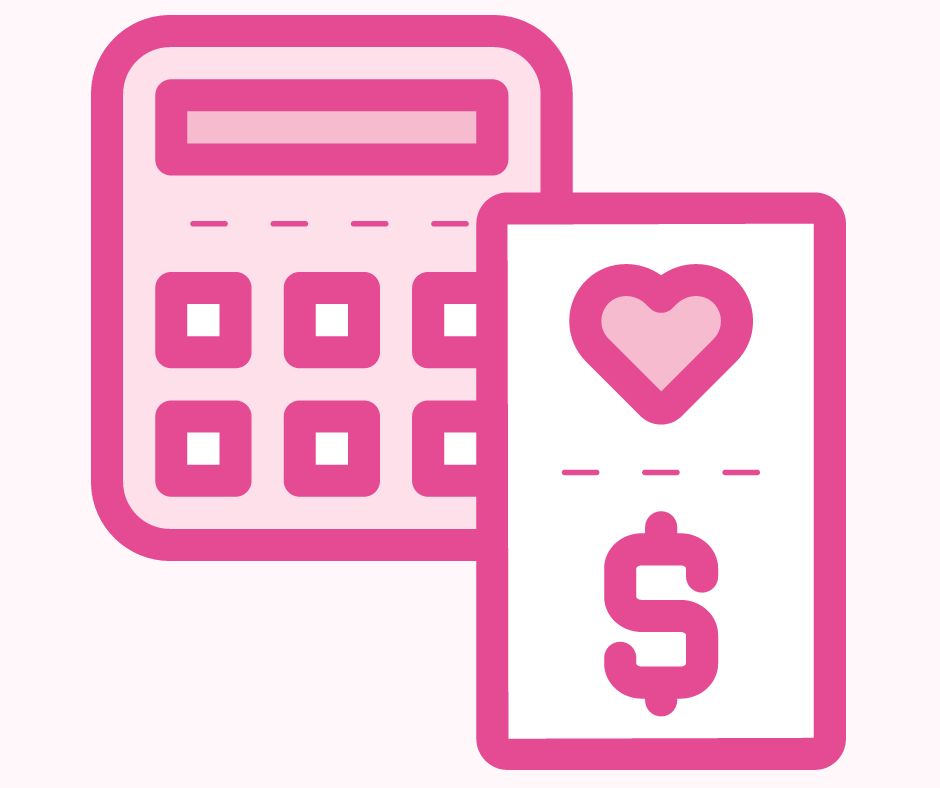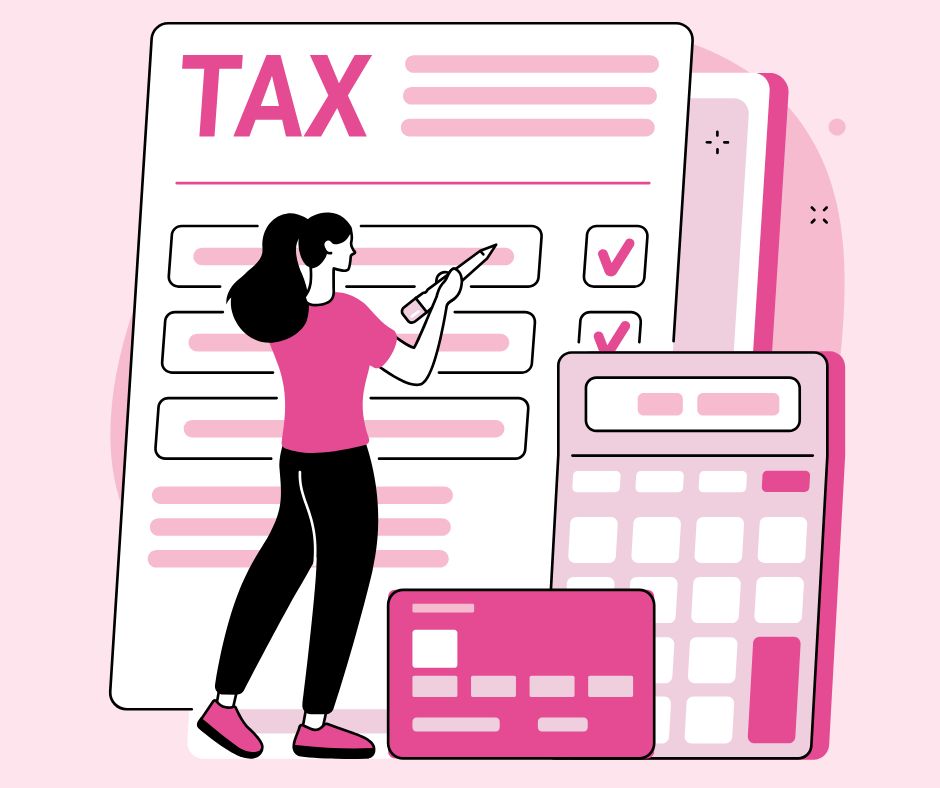Ways Romance Writers Can Save on Their Self-Publishing Budget

I saw a post in a Facebook indie author group asking how important it was to hire an editor because they had limited funds. The truth is, while self-publishing is affordable, to do it right involves some investment. From editing and formatting, to covers and marketing, there are many tasks in the self-publishing process that cost money.
Budgeting in self-publishing is crucial to maximize profitability because it allows you to allocate resources effectively, ensuring that essential aspects receive the necessary investment and avoiding spending on non-essential items. The good news is that there are areas where you can lower your expenses in publishing and marketing your book, especially if you’re willing to invest a little time and elbow grease.
With that said, there are some areas where you should invest money, but even in those cases, there are ways to cut down on the costs.
Why Investing in Your Book is Important
Before we talk about how to save, let’s talk about why you should spend some money.
What is your goal?
If you’re seeing self-publishing as a way to make extra income or a living, creating the best product you can will be important to achieving that goal. Part of what makes a great product is quality production and packaging.
If, however, you just want to publish a book and don’t care if it sells or not, then you can get away with not investing so much in it’s creation.
Your Product
When you pick books to read, or buy things in general, what factors have you taking an interest, and then deciding to buy? For most people, how the items look (the cover) and the quality of production play a role in a purchase. This is the same for people who are looking at your book.
Areas to Invest
There are three areas where I believe authors should be willing to invest money in a quality book and successful book sales. They are:
- Editing: If your goal is to make money with your books, then you should put out the best product you can. To do that, you need to have a professional edit. I know editors who write but don’t edit their own books because it’s nearly impossible for authors to edit their work. You’ll read what you intended to write. You’ll lose focus because you’ve already spent so much time in the story.
- Cover Design: The cover is the first thing a reader sees and makes the decision if they want to read the description and buy the book. A poorly designed cover won’t attract readers. They pass it without a second glance.
- Email list: Good news is that with an email list service that offers landing pages, you can build a list of readers without a website. Yes, social media is free and a good way to attract readers, but readers who give their email have taken a greater interest in you, raised their hands saying they want to hear from you, and are more likely to see what you post.
There are other tasks you can spend money on such as formatting, ads, tools, and more, but there are also ways to DIY or alternatives that can eliminate or reduce your expense. The above three items are where I’d recommend budget-conscious publishers focus their money in the beginning.
How to Save On Your Publishing Expenses
We’ll talk about some DIY publishing tasks in a bit, but I want to start by giving ideas on how to save on the areas in which you really should budget some money to produce a professional quality book.
How to Save on Editing
While you should spend money on a professional edit, you can save on editing services by delivering the cleanest copy of your manuscript possible. Here are some ways to do that:
- Self-Edit Thoroughly: Self-editing not only reduces the amount of work your professional editor needs to do, but also lowers your overall costs. You won’t catch everything, but do the best you can read your manuscript to catch all the errors in spelling and grammar. Word and Google both offer basic spelling and grammar checks. Depending on the version of Word you use, there are other areas it can check your manuscript, such as Clarity (which will catch issues like passive voice), Conciseness, and Inclusivity (sensitivity elements). Before fancy editing tools, I usually did my edits by focusing on one revision task at a time through various passes of the book. For example, I’d focus on plot and story in pass 1, grammar/spelling in pass 2, filler words in pass 3, and so on.
- Listen to Your Manuscript: Hank Philippe Ryan told me about how she listens to her manuscript during her edits. When you listen, the errors will stand out more than when you read. Word offers Read Aloud, which will read your manuscript. Google Docs offers verbalizing using a Chrome App like Chromvox. Or simply read out loud yourself.
- Use Alpha Readers: While alpha readers don’t replace professional editors, they can help you refine your manuscript and reduce the number of revisions needed later on. Alpha readers read your story early on (as opposed to beta readers who read ARCs) to provide valuable feedback on your story, characters, and overall structure. They can help you identify plot holes, inconsistencies, and areas that need improvement, similar to a developmental editor.
- Critique Partner: If you’re willing to read another author’s manuscript, find another author willing to swap manuscripts and provide editing feedback. This can be a cost-effective way to get another pair of eyes on your work.
- Barter: If you know an editor and you have a skill they might need, consider bartering for services.
- Look for newer editors: Experienced editors can usually charge more, whereas a new editor in the marketplace will sometimes charge less as way to jumpstart their business. With that said, try to find a new editor that has some experience. Using a resource like Upwork, you can find newer editors that also will have a few reviews.
- Negotiate Payment Plans: Some editors may offer payment plans or be willing to negotiate their rates, especially if you’re a repeat client or can offer referrals. Don’t hesitate to discuss your budget constraints and see if there’s a way to make the cost more manageable. Just make sure you’re fair. Don’t ask editors to work for peanuts.
How to Save on Cover Design
There are many great design tools such as Canva or AI, but if you don’t understand graphic design, you really should hire a cover designer. Remember, as readers scroll through Amazon, the cover is what will have them stop and take a look, or pass on by.
Here are tips for saving on book cover design:
- Develop your design concept. Check out this post on covers to learn more about what you need to consider when creating a cover. The clearer you are with your designer, the fewer the edits and lower the cost (most designers allow a couple of tweaks, but beyond that, they’ll charge). It can be helpful to share existing covers you like the help them understand what you’re going for.
- Invest in Design Templates: Purchase pre-made cover design templates from sites like Creative Market or Etsy. These templates are created by professional designers and can be customized to fit your book’s theme and genre, providing a polished look at a fraction of the cost.
- Hire a Designer with a Template Option: Many designers have pre-made templates that they can easily tweak to fit your needs. This is less expensive than if they create a design from scratch.
- Hire Freelance Designers: Platforms like Fiverr and Upwork offer access to freelance designers who can create custom covers at various price points. Look for designers with good reviews and a portfolio that matches your vision. Freelancers often provide competitive rates compared to design agencies.
- Negotiate Payment Plans: Some cover designers may offer payment plans or be willing to negotiate their rates, especially if you’re a repeat client or can offer referrals. My designer offers a discount for repeat customers or multiple orders. Don’t hesitate to discuss your budget constraints and see if there’s a way to make the cost more manageable. Just make sure you’re fair. Don’t ask designers to work for peanuts.
- Check out GetCovers: I haven’t used this service, but I know many authors who have. You can get a basic cover for $10 and premium cover for $35.
Save on Email Lists
As you’re getting ready to publish, you should be marketing you book as well. Be sure to check out this post on How and When to Start Marketing Your Romance Book….hint…it’s before it’s published.
List Services
Systeme.io: Not only does Systeme.io have a free level for up to 2,000 subscribers, but you can use it as your website, sell books and merch, build a community, blog, and more. If I were starting today, Syteme.io is the option I’d use.
Mailerlite: Recently, I helped my sister set up her website and mailing list, and we started with MailChimp as it has a free option. BUT…that free option didn’t include an autoresponder, which is a crucial element to an email list. When someone signs up for your list, the list service needs to automatically send out a welcome email.
There were a couple more options, but we went with MailerLite because it’s free option offered up to 1,000 subscribers, 12,000 monthly emails (e.g. with 1000 subscribers you can send 12 emails a month, which is likely more than you need). Plus, it has landing pages, signup forms, and an autoresponder. Once you exceed 1,000 subscribers, you’ll have to pay.
Aweber: I’ve been with Aweber forever and have been happy with the service. It has a free option with landing page and autoresponder up to 500 subscribers. I’ll admit I’m biased, but that’s because I’ve been using it for a long time. It has great customer support, lots of tutorials and helpful articles, and is always adding new features.
Whatever you decide about your list service, pick one with a landing page feature. This will basically give you a “website” where readers can sign up for your email list until you decide to build a website. Here is a sample landing page I have for the 2023 WWH Preptober/Writevember Challenge. (NOTE: Don’t fill out the form on this page. This challenge is over for 2023. I’m just sharing it as an example of a landing page).
DIY Publishing Expenses
Below are some areas you can pay for, but you can DIY without too much impact on the quality of your book.
Formatting
Formatting your book is important, but if you’re willing to play around with your doc, and are careful to check your proofs, you can do this on your own. Formatting depends in part on where you intend to publish and what format. Kindlepreneur has an extensive multi-part tutorial on formatting.
If you’re wanting to use a tool to format, here are a few you can try:
Scrivener: This is a writing software, but it has an export option that will format your book. It’s a very affordable $59
Vellum: I bought a Mac laptop just to have this software because no PC alternative existed at the time (now there is, see below). This is spendy at $249.
Atticus: This is like Vellum but for PC, Mac, Chromebook and Linux. It has a few more bells and whistles (according to their comparison chart) at a lower cost ($147)
Publishing Ebooks
Luckily, most publishing platforms are “free” to use. I say free because you don’t have to spend money to publish your book. Instead, you “pay” out of book sales. For example, at Amazon KDP, you can get a 70% royalty from ebooks, which means Amazon keeps 30% when a book sells (there can be a few more fees depending on file size).
Publishing direct at other ebook retailers such as Nook, Kobo, iBooks, etc is free, or you can use Draft2Digital to publish at these and tons of other places (e.g. libraries and more), for free as well. Again, your cost comes from the sale of your book.
IngramSpark used to charge $49 for publishing, but it appears to have eliminated that fee. It does have a revision fee of $25 after 60 days (see full pricing info here-PDF). It will also distribute to various book retailers.
Publishing Print Books
Like ebooks, publishing print books through Amazon KDP is free to set up, and your cost comes from book sales. It will also include a free ISBN for print books.
IngramSpark, too, now offers free set up and free ISBN as well.
Bookvault offers a way to direct sell your books (e.g. from your own website) in a print-on-demand dropship method. It’s free to set up and your cost comes from book sales.
Lulu, like Bookvault also offers a a POD dropship book publishing service.
Other Areas to Save on Your Romance Publishing Budget
I mentioned that you should start marketing your book early, even before publishing. Here are free and low-cost ways to get the word out. Check out WWH’s post on 5-minute book marketing tasks, many of which are free.
Social Media: It’s free to join social media. All it takes is time. I like to use scheduling software tools to help me, which isn’t free, but can be helpful in automating some tasks. I use SocialBee because it will reschedule past posts for me and works with all the major platforms.
Email List Swaps: This is where you agree to share info about another author’s book or lead magnet in with your email list in exchange for them mentioning your book to their subscribers. You can find groups on Facebook that help arrange this (search romance author email swaps). Bookclicker offers a service to help with this as well. It’s free, although along with swaps you can buy space in a newsletter or sell space in yours. These can work well, but you’ll want to focus on finding like authors with similar list sizes for best results.
Marketing Content (graphics, videos, etc): Today, graphics and especially video get the most attention. Probably your best option for free graphic creation is Canva. You can get free graphics from Canva or stockphoto places like Pixabay.
Guest and Tours: This is a great free way to get in front of other author or book influencers’ readers. Visit blogs to see if they have author interview or guest posts. You can hire book tour/review service that can setup blog tours. Check out book podcasts or booktube for influencers who interview authors. Note, you shouldn’t have to pay to be on a podcast or show. You can also look at participating or hosting in author takeovers on social media. Find book influencers and see if they’ll mention or review your book. I’m looking at grabbing this deal at Appsumo for EezyCollab which will allow me to search for book influencers and reach out to them.
Events: I’m a big fan of events, but they can be expensive. You can end up spending close to $1000 for registration, travel, hotel and food. But there are ways to save on t his as well. The first is to check out virtual events which can be cheaper. Second, stick to local events to eliminate the cost of travel. Finally, find local free and low-cost opportunities. Libraries are a great place to talk about and sell your book for free. Search for local book festivals, which often have a table cost less than $50. Join a group of local authors and set up an event, splitting the costs (or see if the library will host you).
Time is Money
When it comes to being a low-budget author, you’ll need to invest time if you can’t invest money, and this is where things can get hard. You want to write your story, but you also need to make social media graphics and post them, hang out with your followers, reach out to bloggers and podcasters, and all the other bits that go into being an indie author (or an author in general).
As your income grows, look at ways to maximize your time and money. Are there tools to automate some of your work, such as social media? Hire a virtual assistant to help with busy work. Run ads (although watch them closely).
To scale up your author business without burnout, you’ll need to spend money, but you’ll want to do it strategically.
Do you have other ideas to help romance authors save in the writing, publishing, and marketing of their books? Let me know in the comments below.








Responses